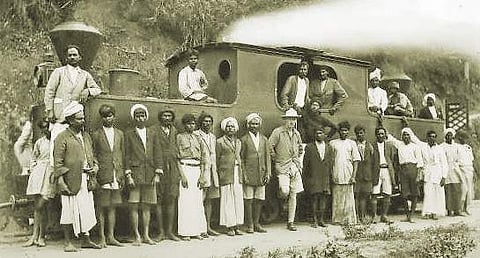

THIRUVANANTHAPURAM: It was the devastating deluge in 1924 that washed away a British engineering marvel in Munnar - the monorail train connecting the hill station with Mattupetty Top Station.
Now, after another deluge, which wreaked havoc in Idukki last August, the Tourism Department has decided to revive the train service for the benefit of tourists, on the Darjeeling train service model.
According to Tourism Minister Kadakampally Surendran, the revival of monorail, which is now in a state of ruins with a few remnants scattered throughout Munnar and Kundala Valley, is one of the projects in the Tourism Department’s top-priority list.
The state government has decided to revive the project in order to give tourism prospects of the hill station a shot in the arm, he said.
Tourism officials said a delegation, including officials from the Kerala Rail Development Corporation, will hold a field visit on Friday as part of reviving the project. The team will explore its feasibility and based on its report, the department will begin the next phase, which includes preparing a detailed project report.
QUICK GLANCE
The Tourism Dept aims to revive 5 km railway line in the first phase.
Monorail, which was developed into a narrow-gauge rail line in British era, would be resuscitated in the model of Darjeeling train service
S Rajendran, MLA, who was at the forefront for reviving the project, said the British-era monorail was the mainstay of the British officials to transport spices and tea from Munnar to Mattupetty Top Station and then to Bodinayakkanur in Tamil Nadu and subsequently to Thoothukudi by rail. From there, it was shipped to England and other parts of India.
The Munnar railway station, which now houses the head office of Kanan Devan Hills Plantations (KDHP) Ltd, was built in 1902. In 1908, the monorail was replaced by the light railway. The 1924 deluge damaged the railway line beyond repair and later a road was built connecting Munnar with Top Station which also connects Kodaikanal in Tamil Nadu. But since the road was through the forest, the vehicular traffic to Kodaikanal through the route was stopped. A big chunk of the 35-km railway line passes through the tea estates of Tata.
When the project was taken up, Tata had informed that they would cooperate with the project if the state government came up with a detailed project report, which essentially paved way for the revival of the project, said Tourism Department officials.
At a glance